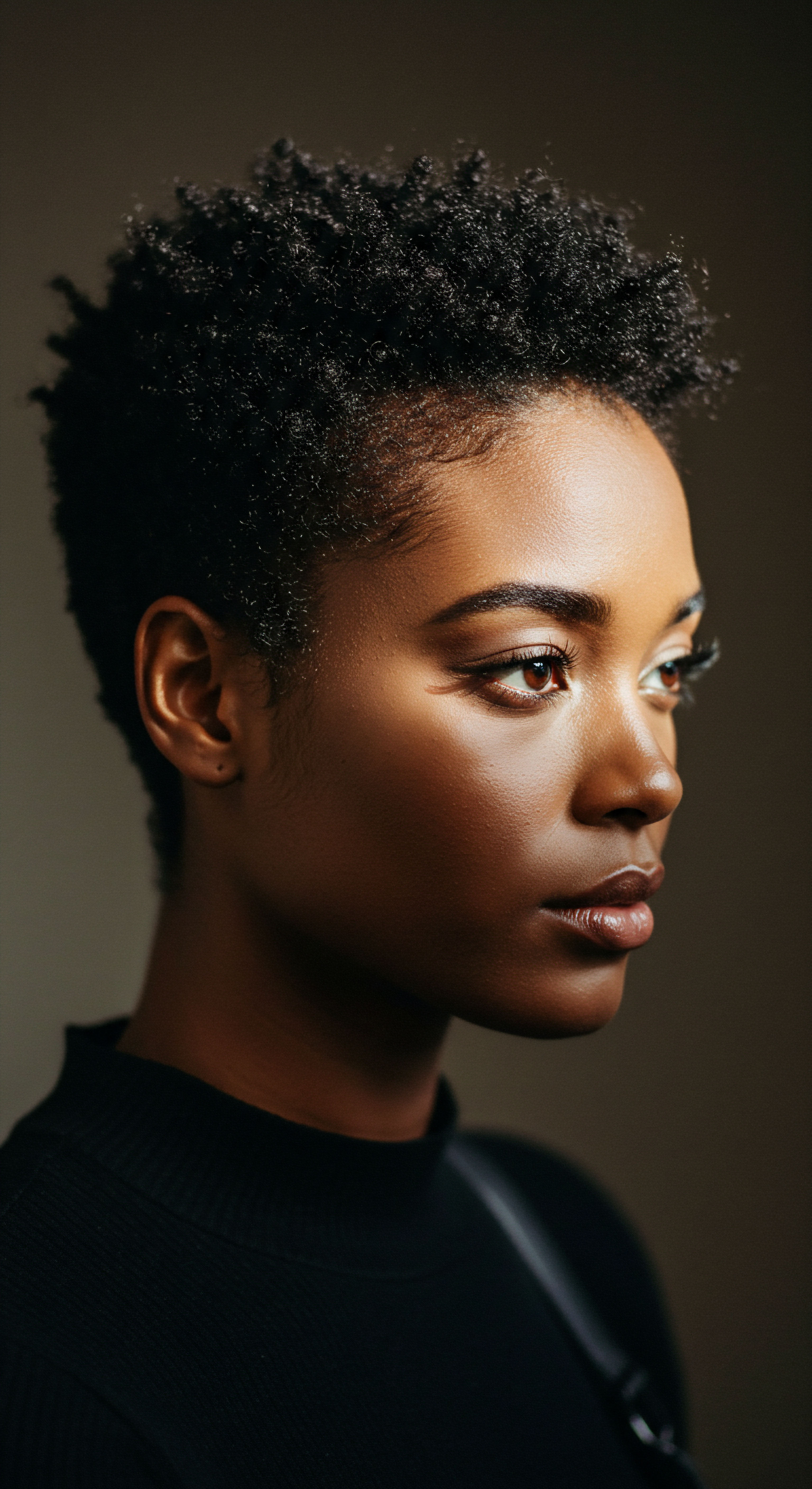
Roots
The quiet hours of the night, often perceived as a time of stillness and repose, hold a secret life for textured hair. As the world outside hushes, an unseen choreography of biological processes and environmental interactions unfolds, profoundly influencing the very strength and suppleness of our coils and curls. This nocturnal realm is far from dormant; it is a period of subtle yet powerful forces shaping the vitality of our strands. To truly comprehend the resilience and delicate nature of textured hair, one must first look beyond the daytime rituals and consider the profound contributions of these hours of darkness.
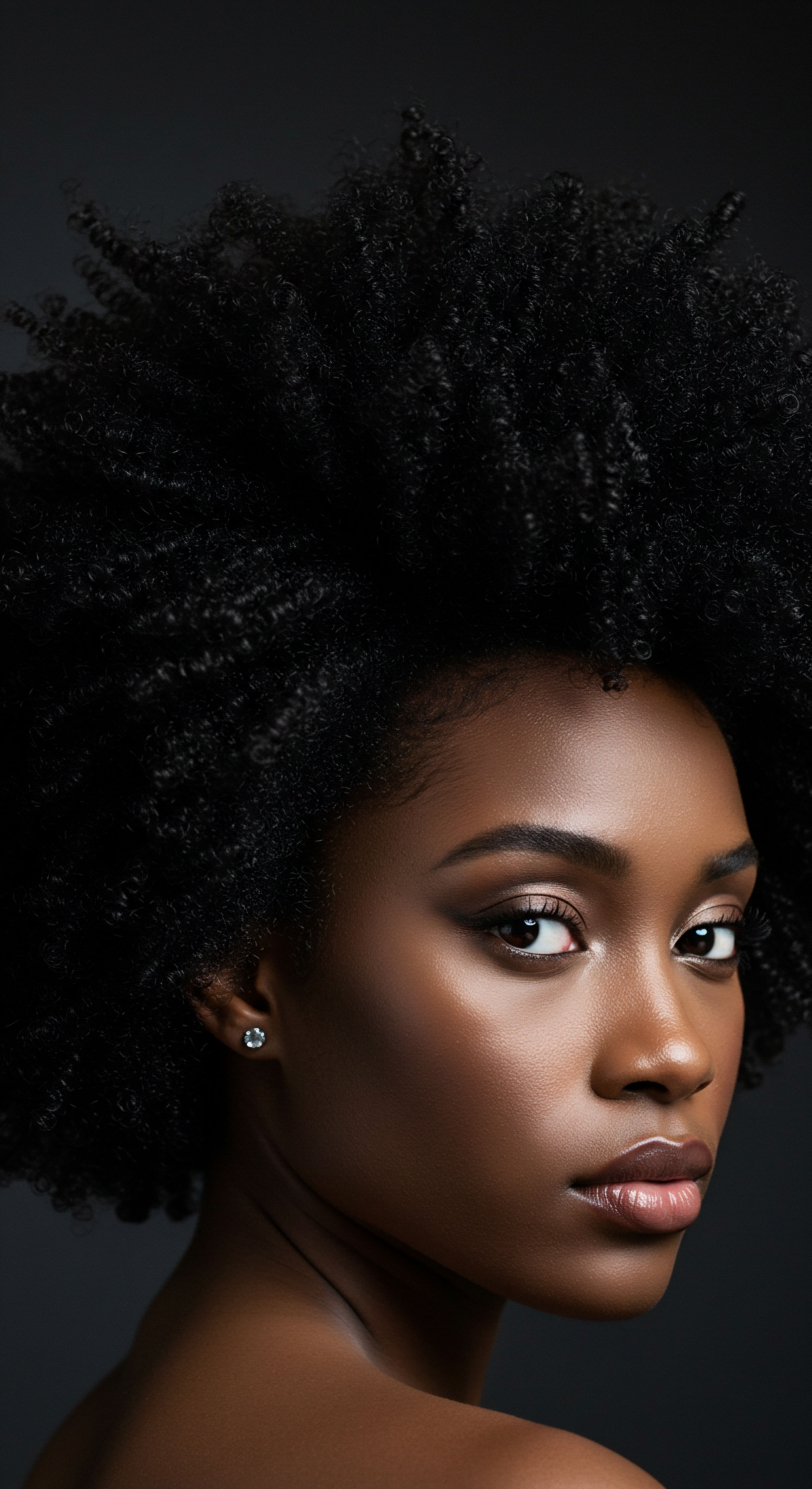
The Architecture of Textured Hair
Each strand of textured hair, whether a gentle wave or a tight coil, is a testament to natural engineering. At its core, the hair fiber consists primarily of a protein known as Keratin, making up approximately 95% of its composition. This fibrous protein provides hair with its characteristic strength and structure. Beyond keratin, healthy hair holds an average of 10-15% water, vital for its biochemical processes.
Lipids also play a role, acting as a protective barrier and contributing to shine, often derived from the sebaceous glands that produce sebum. Minerals like zinc, iron, copper, and magnesium also contribute to the hair’s structure.
The outermost layer, the Cuticle, resembles overlapping scales, much like shingles on a roof. This protective shield guards the inner cortex, which houses the pigments responsible for hair color and accounts for the majority of the hair fiber’s mass. The cortex provides hair with its elasticity and texture.
For textured hair, the cuticle layers are often more lifted and less uniformly smooth than in straight hair, making them more susceptible to external aggressors. This unique structure, while beautiful, also means textured hair requires a specific understanding of its needs, particularly when it comes to nighttime influences.
The nightly hours are a quiet stage where biological rhythms and environmental factors profoundly shape the strength and suppleness of textured hair.
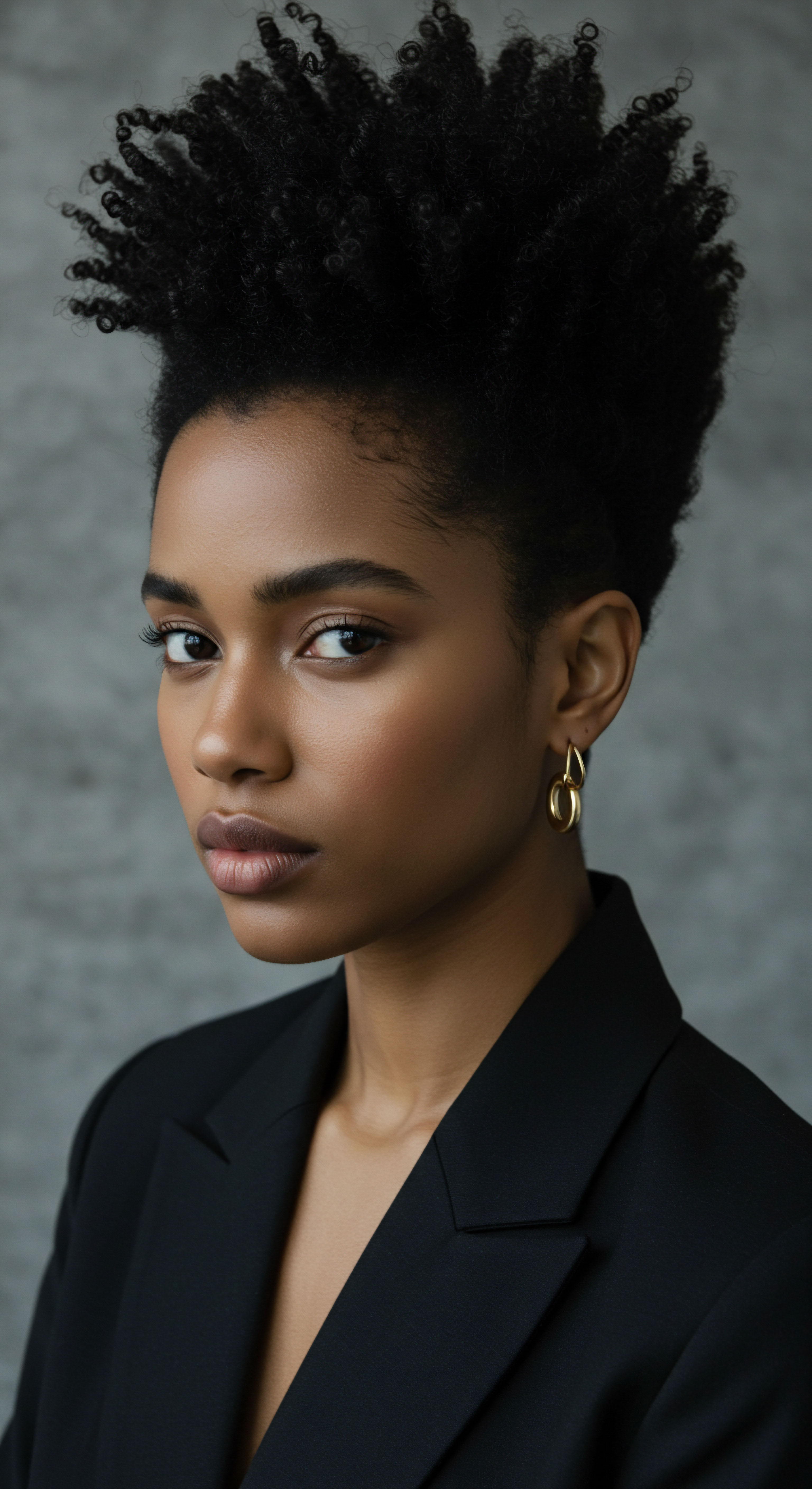
What is the Hair Growth Cycle During Sleep?
Hair follicles, like other parts of the body, follow a biological clock. This internal rhythm, known as the Circadian Clock, regulates gene expression over approximately twenty-four hours. During deep sleep, particularly the non-REM stage, the body shifts into a repair and growth mode.
This period sees an increase in cell turnover, tissue repair, and a rise in hormone levels, including growth hormone and melatonin. These factors actively support the anagen phase, the active growth period of the hair cycle.
Research indicates that circadian clock genes play a role in regulating the hair growth cycle, which has a much longer periodicity than a single day. A study revealed that these clock genes influence the expression of key cell cycle control genes, with keratinocytes in a critical compartment of the hair follicles showing halted progression in the G1 phase of the cell cycle in mutant mice. This suggests that the circadian clock modulates anagen progression through its effect on the cell cycle. The hair follicle’s ability to regenerate hairs throughout life is connected to hair stem cells and the influence of the circadian rhythm.
- Keratin ❉ The primary protein making up about 95% of hair, providing its strength and structure.
- Cuticle ❉ The outermost protective layer of hair, composed of overlapping scales.
- Circadian Clock ❉ The body’s internal biological rhythm, influencing cell activity and hormone levels, including those that support hair growth.

Ritual
As the day’s demands recede and evening descends, our attention often turns to rest. For textured hair, this transition from day to night is not merely a pause but a crucial period where intentional care can significantly alter its condition. The daily practices, or the absence of them, during these hours of slumber hold sway over the hair’s very resilience and its ability to retain its natural softness. This section steps into the practical wisdom that safeguards textured strands, offering insights into how our nighttime habits become a silent ritual of preservation.
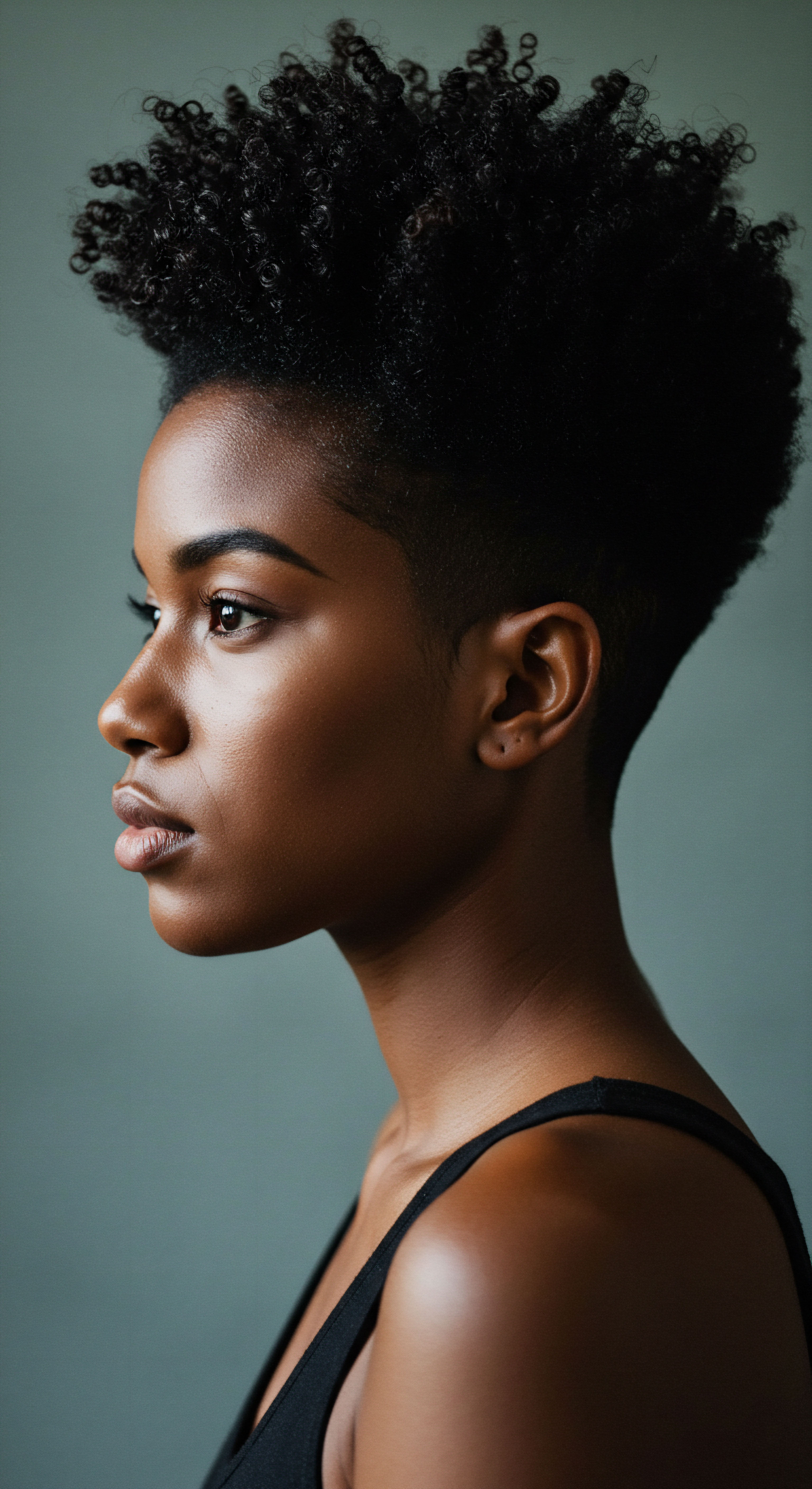
Why does Nighttime Friction Damage Textured Hair?
The constant movement during sleep, the subtle shifts and turns, create a persistent friction between hair strands and the pillow surface. This seemingly minor interaction can inflict substantial damage, particularly on the delicate cuticle layer of textured hair. When the hair cuticle, those overlapping scales, is repeatedly rubbed against a rough surface, these scales can lift, chip, or even break. This disruption leaves the hair’s inner structure exposed, leading to increased frizz, tangles, and ultimately, breakage.
Textured hair, with its natural bends and curves, possesses more points of contact along its length, making it inherently more susceptible to friction-induced damage. Consider that the average person shifts position up to 40 times each night. Each shift contributes to this abrasive interaction, a silent battle against the integrity of the hair shaft. Cotton pillowcases, despite their softness, are particularly problematic as their fibers absorb natural oils from the hair, leaving it dry and brittle, further exacerbating the effects of friction.
| Material Cotton |
| Surface Texture Rough, fibrous |
| Moisture Absorption High |
| Impact on Hair Increased friction, tangles, frizz, breakage, moisture loss. |
| Material Silk or Satin |
| Surface Texture Smooth, slippery |
| Moisture Absorption Low |
| Impact on Hair Reduced friction, minimizes tangles and breakage, helps retain moisture. |
| Material Selecting a smooth, non-absorbent pillowcase is a simple yet impactful step in preserving textured hair health overnight. |
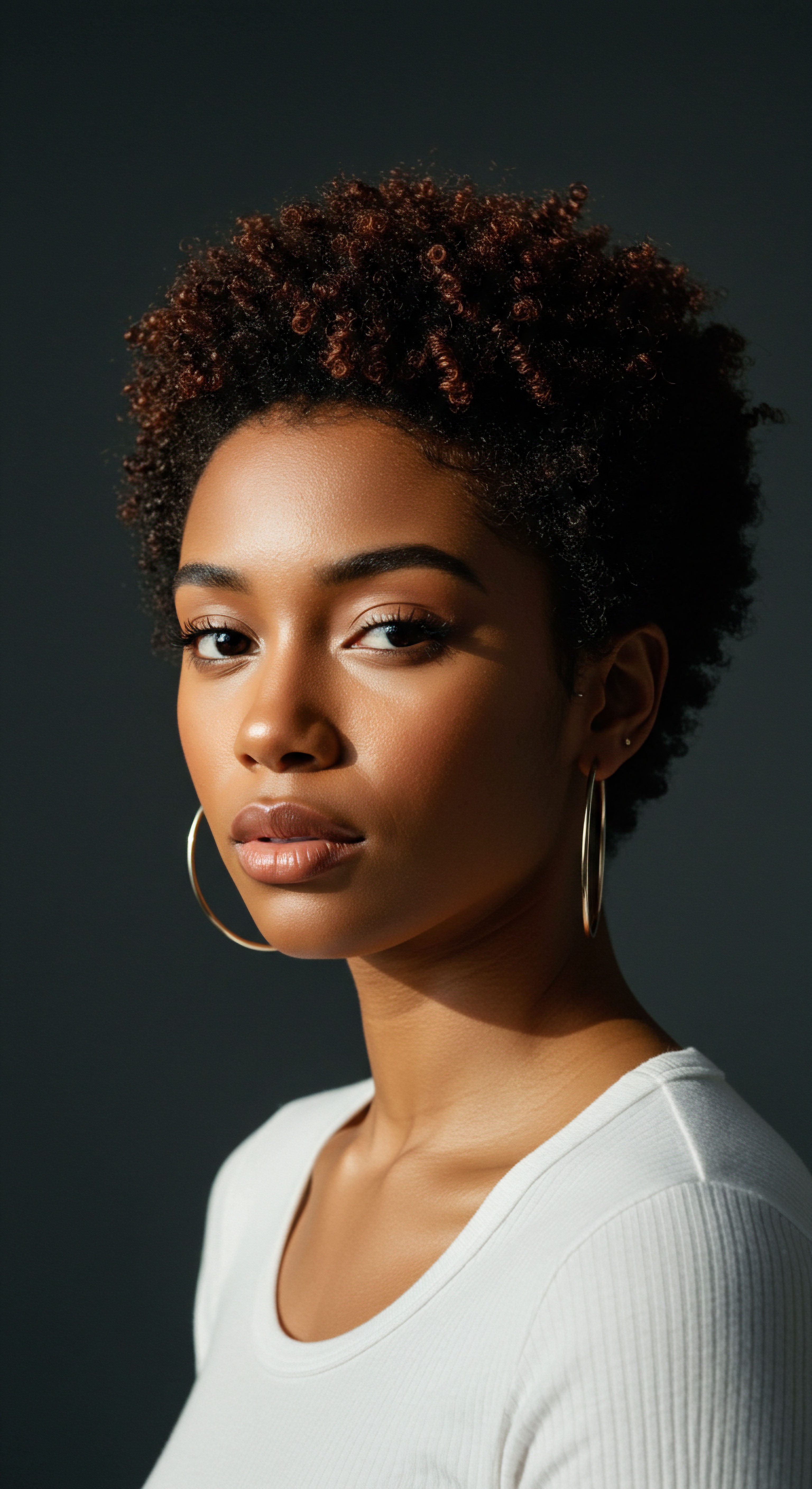
What are Effective Protective Styles for Sleep?
Beyond the choice of pillowcase, the manner in which textured hair is secured before sleep plays a significant role in its nocturnal preservation. Protective styles minimize the hair’s exposure to friction and prevent tangling. These styles aim to keep the hair contained and reduce movement, thereby lessening stress on the hair shaft and follicles.
A common and highly recommended approach for many textured hair types is the Pineapple Method. This involves gathering the hair loosely at the very top of the head, allowing curls to remain uncrushed by the weight of the head or contact with the pillow. A soft scrunchie, preferably silk or satin, is used to hold the hair, avoiding tight elastic bands that can cause tension and breakage. For those with longer or denser hair, loose braids or twists can also provide excellent protection.
These styles help to maintain curl definition and prevent knots from forming overnight. The key is to ensure the style is not too tight, as excessive tension on the scalp can contribute to breakage over time.
Nighttime protective styling is a quiet declaration of care, shielding textured hair from the subtle abrasions of sleep.
Furthermore, ensuring hair is completely dry before bedtime is paramount. Wet hair is considerably more fragile and susceptible to breakage when subjected to friction. Allowing hair to air dry or using a diffuser before styling for bed helps to maintain its structural integrity. Applying a leave-in conditioner or a light hair oil can also add a protective layer, sealing in moisture and creating a smoother surface that further reduces friction against sleeping surfaces.
- Pineapple Method ❉ A loose bun or ponytail positioned high on the head to preserve curl definition and minimize friction.
- Loose Braids or Twists ❉ Effective for containing longer textured hair, preventing tangles and breakage.
- Dry Hair Before Bed ❉ Wet hair is more fragile; ensuring it is dry minimizes breakage during sleep.
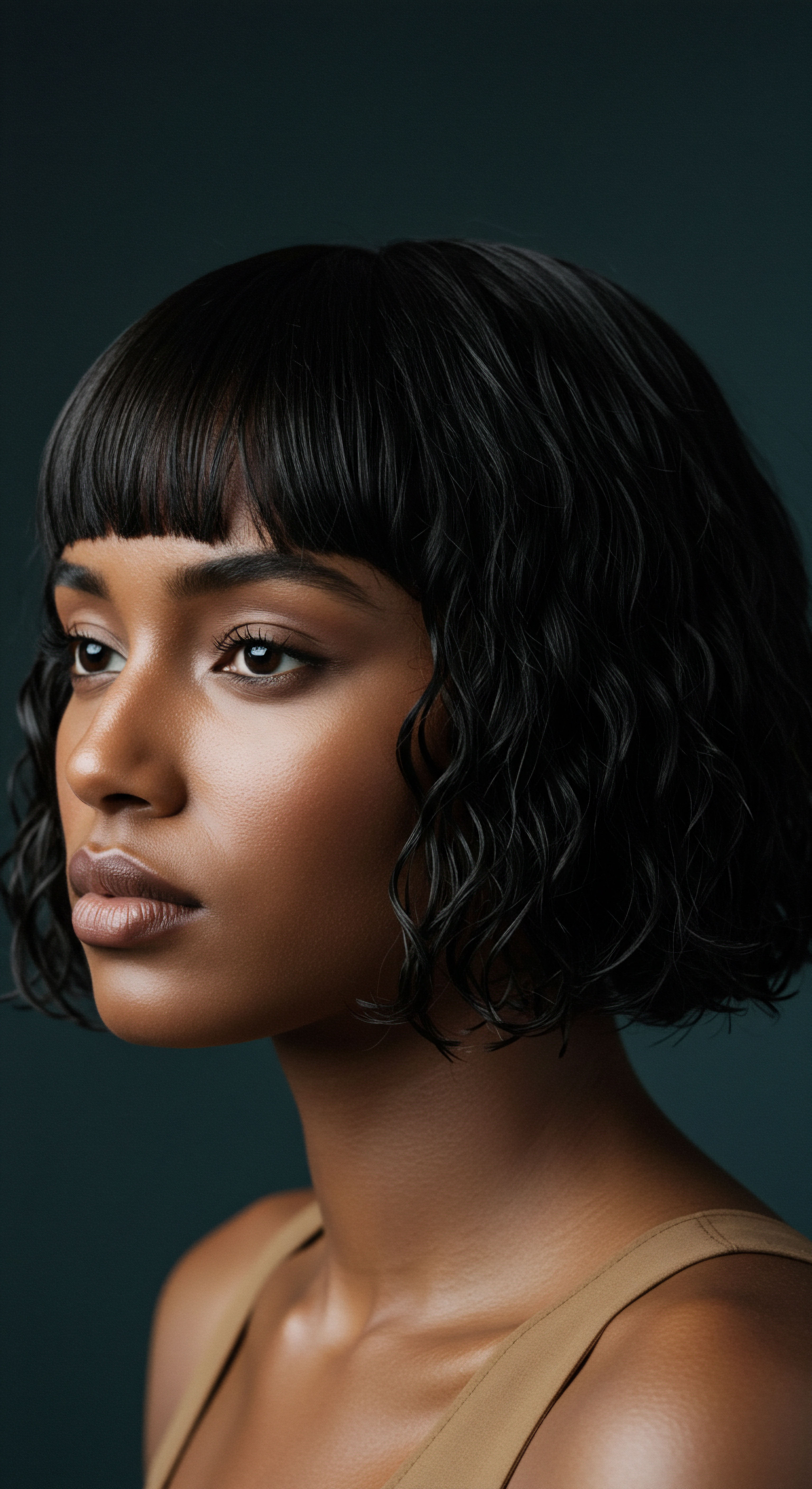
Relay
The quiet of night, far from being a mere cessation of activity, serves as a complex biological relay for our entire being, hair included. This period of deep rest orchestrates a symphony of cellular repair, hormonal recalibration, and metabolic adjustments that directly impact the vitality of textured hair. Beyond the visible interactions of hair and pillow, a deeper, less apparent interplay of internal systems determines the hair’s true strength and suppleness upon waking. We turn now to this intricate, often overlooked, dimension of nocturnal influence.
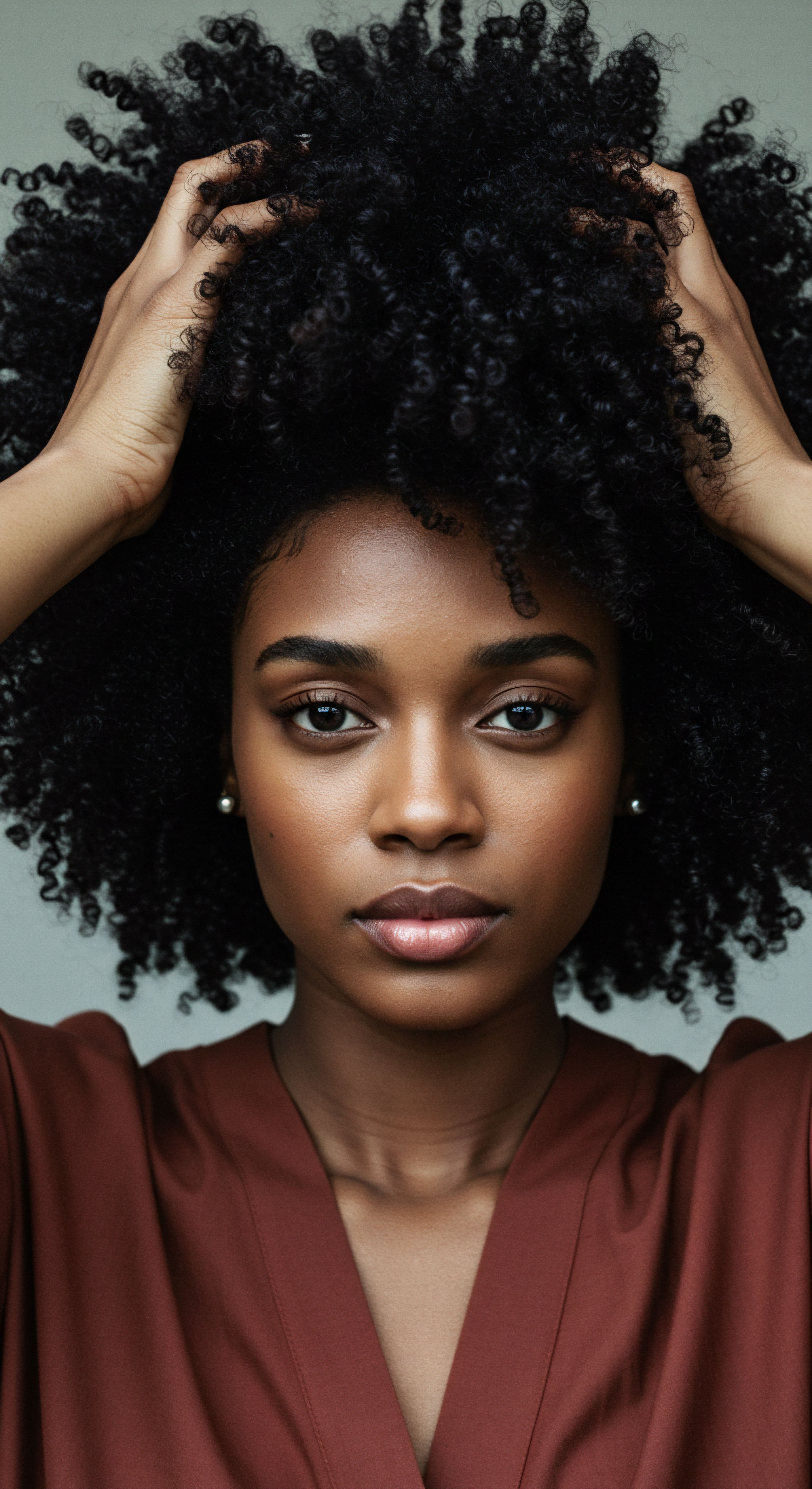
How do Internal Biological Clocks Influence Hair Strength?
The human body operates on a precise internal schedule, the circadian rhythm, which dictates various physiological processes over a 24-hour cycle. Hair follicles themselves possess their own localized circadian clocks, which influence their activity. During deep sleep, the body prioritizes restorative functions.
This is when cell regeneration is at its peak, and blood flow to the scalp increases, delivering vital oxygen and nutrients to the hair follicles. This increased circulation is crucial for healthy hair growth, as nourished follicles are better positioned to produce strong, resilient strands.
Hormonal balance, heavily regulated by sleep, also plays a significant part. Melatonin, often associated with sleep regulation, has shown a compelling connection to hair health. It not only helps control the sleep cycle but also appears to stimulate hair follicles and prolong the anagen (active growth) phase.
A large multicenter study investigating the application of a 0.0033% topical melatonin solution found statistically significant improvements in hair texture and a reduction in hair loss among both female and male patients. This suggests melatonin’s potential to protect follicles from oxidative stress and promote cell growth.
Conversely, sleep deprivation can disrupt this delicate hormonal equilibrium. Insufficient rest elevates cortisol, the body’s primary stress hormone. Chronically high cortisol levels are linked to conditions like telogen effluvium, where hair follicles are prematurely pushed into a resting phase, leading to excessive shedding. This biological stress response can weaken hair over time, making it more prone to breakage and diminishing its suppleness.

Can Sleep Position Truly Impact Hair Health Beyond Friction?
While the mechanical friction from sleeping surfaces is a recognized culprit for hair damage, the sustained pressure from certain sleep positions may also subtly influence hair health through impaired circulation. Consistently sleeping on one side, for instance, can lead to prolonged pressure on that area of the scalp. This might temporarily reduce blood flow to the hair follicles in that specific region. Over extended periods, reduced blood supply can deprive follicles of the necessary oxygen and nutrients, potentially affecting their long-term health and the quality of the hair produced.
Consider a study published in 2020 that examined over 1,800 individuals with female pattern hair loss. This research found a correlation between poorer sleep quality and an increased rate of hair loss. While the study did not isolate sleep position as the sole determining factor, it did point to sleep quality being associated with other factors like stress levels and overall well-being, which in turn affect hair health. The interplay here is subtle ❉ while not a direct cause of genetic hair loss, sustained pressure from sleeping can exacerbate existing predispositions or contribute to localized weakening.
Beyond pillow friction, the unseen nocturnal choreography of hormones and scalp circulation profoundly shapes hair’s inherent resilience.
This is not to suggest that a single night of sleeping on one side will cause hair loss. Instead, it highlights the cumulative effect of consistent habits. Over years, such subtle influences could contribute to a noticeable difference in hair density or quality in particular areas. This underscores the importance of varying sleep positions when possible and prioritizing protective measures to mitigate any localized stress on the scalp and hair follicles.
| Hormone Melatonin |
| Primary Role in Sleep Regulates sleep-wake cycle |
| Impact on Hair Health Stimulates hair follicles, prolongs active growth phase (anagen), antioxidant properties. |
| Hormone Growth Hormone |
| Primary Role in Sleep Cell repair and regeneration |
| Impact on Hair Health Essential for hair follicle repair and growth. |
| Hormone Cortisol |
| Primary Role in Sleep Stress response, circadian rhythm |
| Impact on Hair Health Elevated levels linked to hair loss (telogen effluvium), disrupts hair cycle. |
| Hormone Balanced hormone levels during sleep are essential for maintaining a healthy hair growth cycle and minimizing hair loss. |
The hair’s ability to recover and rebuild overnight is a testament to the body’s innate wisdom. When this nightly repair process is compromised, the effects become apparent in the hair’s appearance and strength. Understanding these internal rhythms and external pressures allows for a more holistic approach to hair care, one that honors the quiet work performed during our deepest rest.
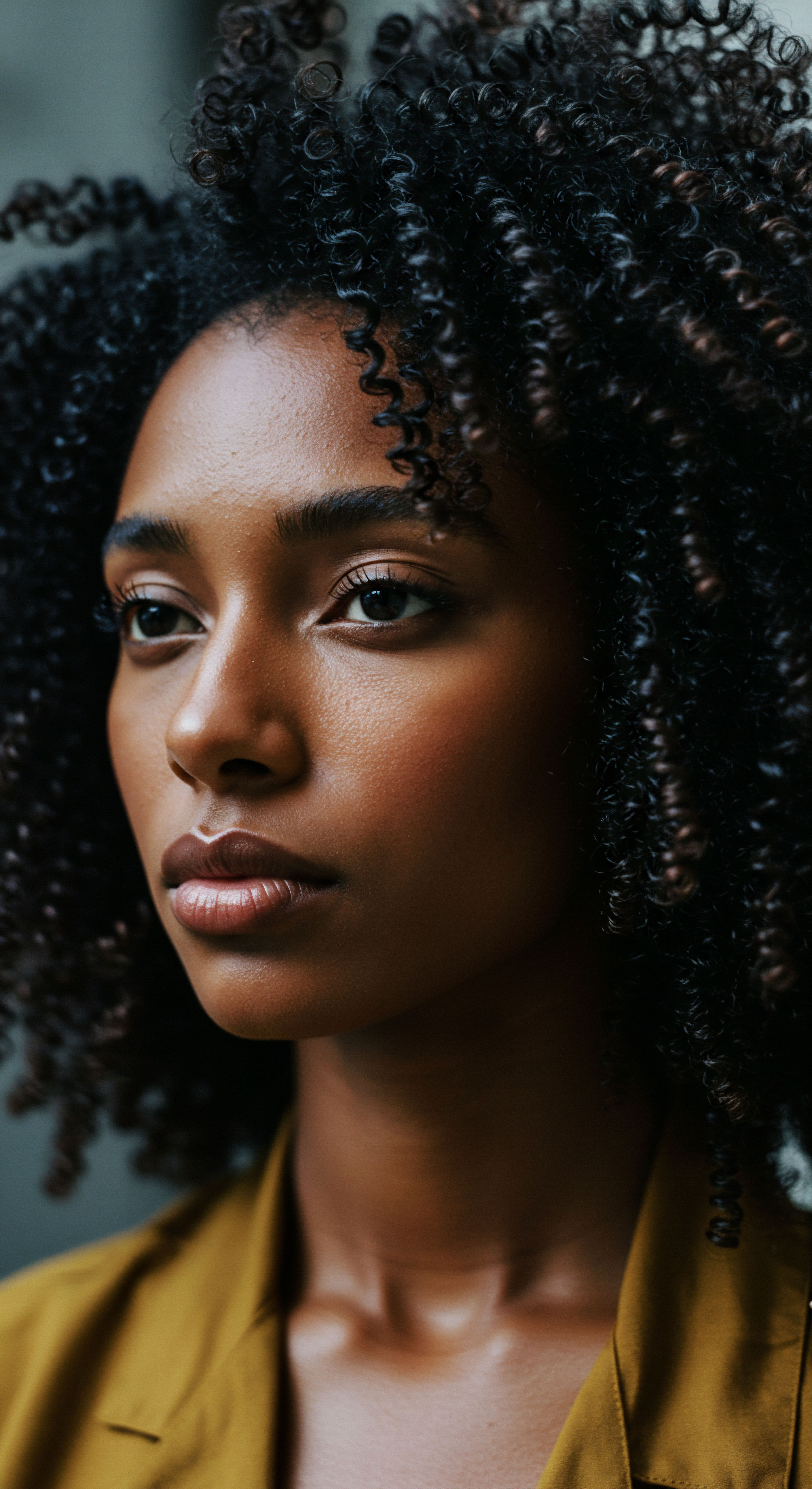
Reflection
The nocturnal hours, far from being a period of simple dormancy, are a dynamic canvas upon which the future of textured hair is quietly painted. From the rhythmic dance of our internal biological clocks to the subtle caress or abrasion of our sleeping surfaces, every element contributes to the strength and suppleness we perceive each morning. A true appreciation for textured hair, then, requires not just a focus on daytime styling and products, but a reverence for the unseen, often overlooked, processes that unfold under the cover of night. By acknowledging these profound influences, we are invited into a deeper relationship with our hair, one that honors its inherent resilience and supports its nightly renewal, allowing it to greet each new day with renewed vitality.

References
- Fischer, Thomas W. et al. “Topical Melatonin for Treatment of Androgenetic Alopecia.” International Journal of Trichology, vol. 5, no. 3, 2013, pp. 157-160.
- Geyfman, Moshe, et al. “Local circadian clock gates cell cycle progression of transient amplifying cells during regenerative hair cycling.” Proceedings of the National Academy of Sciences, vol. 110, no. 21, 2013, pp. 8658-8663.
- Lin, K. K. et al. “Circadian Clock Genes Contribute to the Regulation of Hair Follicle Cycling.” PLoS Genetics, vol. 9, no. 5, 2013, e1003415.
- Paus, Ralf, and Michael Czajkowski. “The Hair Follicle ❉ A Specialized Mini-Organ for the Study of Circadian Rhythms.” Journal of Investigative Dermatology, vol. 130, no. 5, 2010, pp. 1205-1207.
- Rebora, Alfredo. “The biology of the hair follicle.” Clinical Dermatology, vol. 19, no. 2, 2001, pp. 101-109.
- Randall, Valerie A. “Androgens and hair growth ❉ an update.” Journal of Cosmetic Dermatology, vol. 2, no. 2, 2003, pp. 60-68.
- Safe, Stephen. “Hormonal Regulation of Hair Growth.” Dermatologic Clinics, vol. 17, no. 4, 1999, pp. 741-750.
- Sperling, Leonard C. “Hair Anatomy and Histology.” Dermatologic Clinics, vol. 17, no. 4, 1999, pp. 719-732.
- Tobin, Desmond J. “Hair Follicle Pigmentation ❉ A Journey from the Hair Matrix to the Hair Shaft.” Journal of Investigative Dermatology Symposium Proceedings, vol. 10, no. 3, 2005, pp. 185-192.
- Van Scott, Eugene J. and Richard J. Yu. “Control of the Hair Cycle.” Journal of the American Academy of Dermatology, vol. 11, no. 6, 1984, pp. 1100-1104.